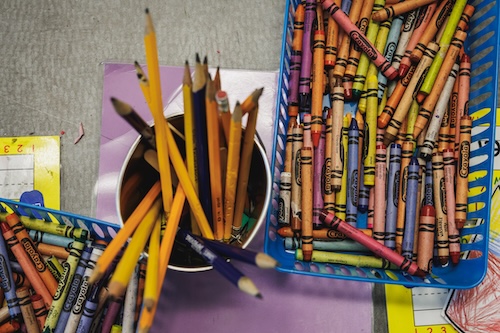Women’s History Month didn’t start out as a month or even a week. It evolved from the first Women’s Day that happened on February 28, 1909, in New York City—a celebration rooted in the labor rights movement of the time.
Activists began pressing for the inclusion of women’s achievements in history books and classrooms in the 1970s. That led to weeklong celebrations in schools across the country and, in 1980, President Jimmy Carter proclaiming March 2–8 to be National Women’s History Week. Congress moved the ball forward in 1987 by passing a proclamation officially creating Women’s History Month.
The contributions of women in the United States are evident in every arena, from politics to the arts, education to medicine, and technology to the military. The possibilities for acknowledging icons and innovators during Women’s History Month—and inspiring a new generation of trailblazers—are virtually limitless. Read on for ways to celebrate women in history in your classroom.
1. Women as activists
A timely place to start in this presidential election year is to recognize the centennial of women’s suffrage. The Nineteenth Amendment was ratified in 1920, but the fight for the vote began early in the nineteenth century. Well-known leaders of the movement, such as Susan B. Anthony and Elizabeth Cady Stanton, and the first-known African American suffragette Sojourner Truth campaigned tirelessly alongside allies whose names will likely never be known.
Here are some activities to spark learning about women’s suffrage:
- Grades K–3: Have your students help you make signs with appropriate slogans or images advocating for women’s right to vote. Hang them in your classroom or hold a march through the halls.
- Grades 4–8: Hold a mock election. Stage three separate votes on a topic likely to interest your kids that’s also likely to lead to different results based on who’s voting. For the first vote, have only girls vote, and for the second, only boys. Hold a final vote with all your students. Tabulate the votes and discuss questions such as:
- How do the results of each vote compare?
- What potential problems come up if one group decides for the whole class?
- What’s the upside of the entire class having a say in the outcome?
- Does following a cisgender system for voting cause any problems?
- Grades 9–12: Have students imagine that social media existed in 1920. Ask them to craft a post to their friends and followers in support of women getting the vote or celebrating the ratification of the Nineteenth Amendment.
2. Women in education
Women have been at the forefront of progress in education—both in and out of the classroom. Mary Mcleod Bethune, for example, was born to former slaves in South Carolina in 1875. The first and only of her 16 siblings to go to school, she earned a college degree and fulfilled her dream of becoming an educator. She went on to found Bethune-Cookman University in Florida, where she also served as president, and co-found the United Negro College Fund.
Here are some ideas on how to mark the achievements of women in education:
- Grades K–3: Read Here Come the Girl Scouts!, an illustrated story about founder Juliette Gordon Low’s passion for equipping girls with the knowledge and skills to explore nature just like the boys.
- Grades 4–8: Watch The Miracle Worker, the true story of Helen Keller and her teacher, Anne Sullivan.
- Grades 9–12: Ask students to browse the Smithsonian’s Because of Her Story education section. Have them select a collection object and write a paragraph about how it relates to their understanding of women’s history.
3. Women in science
Swedish teenager Greta Thunberg has become known around the globe as a fierce campaigner for action on climate change. But can you name the American woman who discovered the cause of global warming?
Eunice Newton Foote theorized in 1856 that an overabundance of carbon dioxide in the atmosphere could raise the Earth’s temperature. She has only recently been acknowledged for her pioneering research, which paved the way for our current understanding of climate science.
Here are some resources to help your students discover other “hidden figures” and firsts for women in science:
- Grades K–3: Queen of Physics, an illustrated story about Manhattan Project physicist Wu Chien Shiung
- Grades 4–8: Sally Ride, a photobiography of America’s first woman in space
- Grades 9–12: Black Women in Medicine, a documentary that honors pioneers in the field including Dr. Jocelyn Elders, the first black female US surgeon general
Tie it in to today
There’s no substitute for some good, old-fashioned dialogue. Ask your students to share their thoughts on women who are currently making history. Whether it be in sports, entertainment, or engineering, who inspires them and why? In other words, find out how today’s women are shaping students’ notions of what they can be when they grow up. Let that start a conversation that lasts long after Women’s History Month is over.









